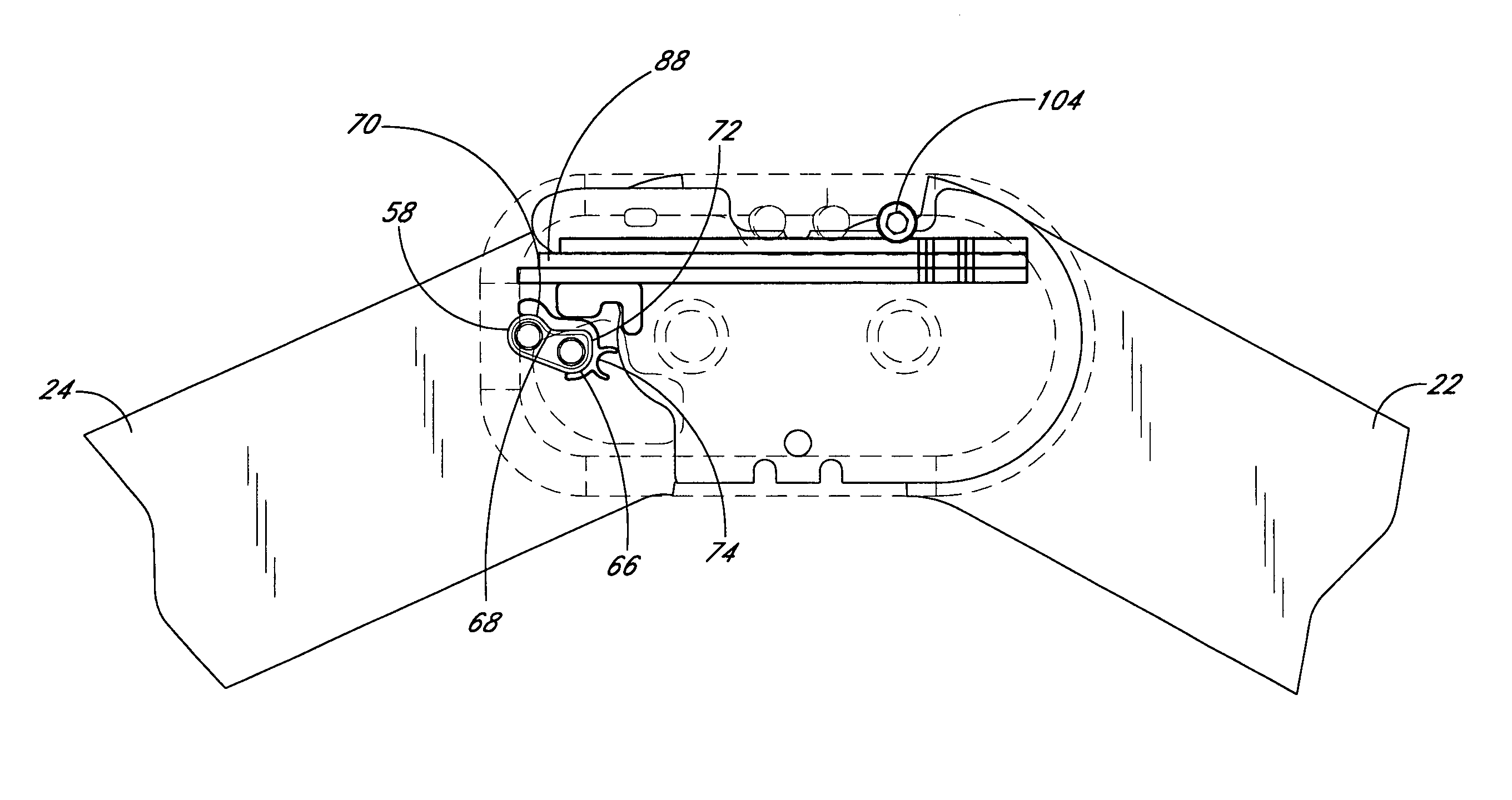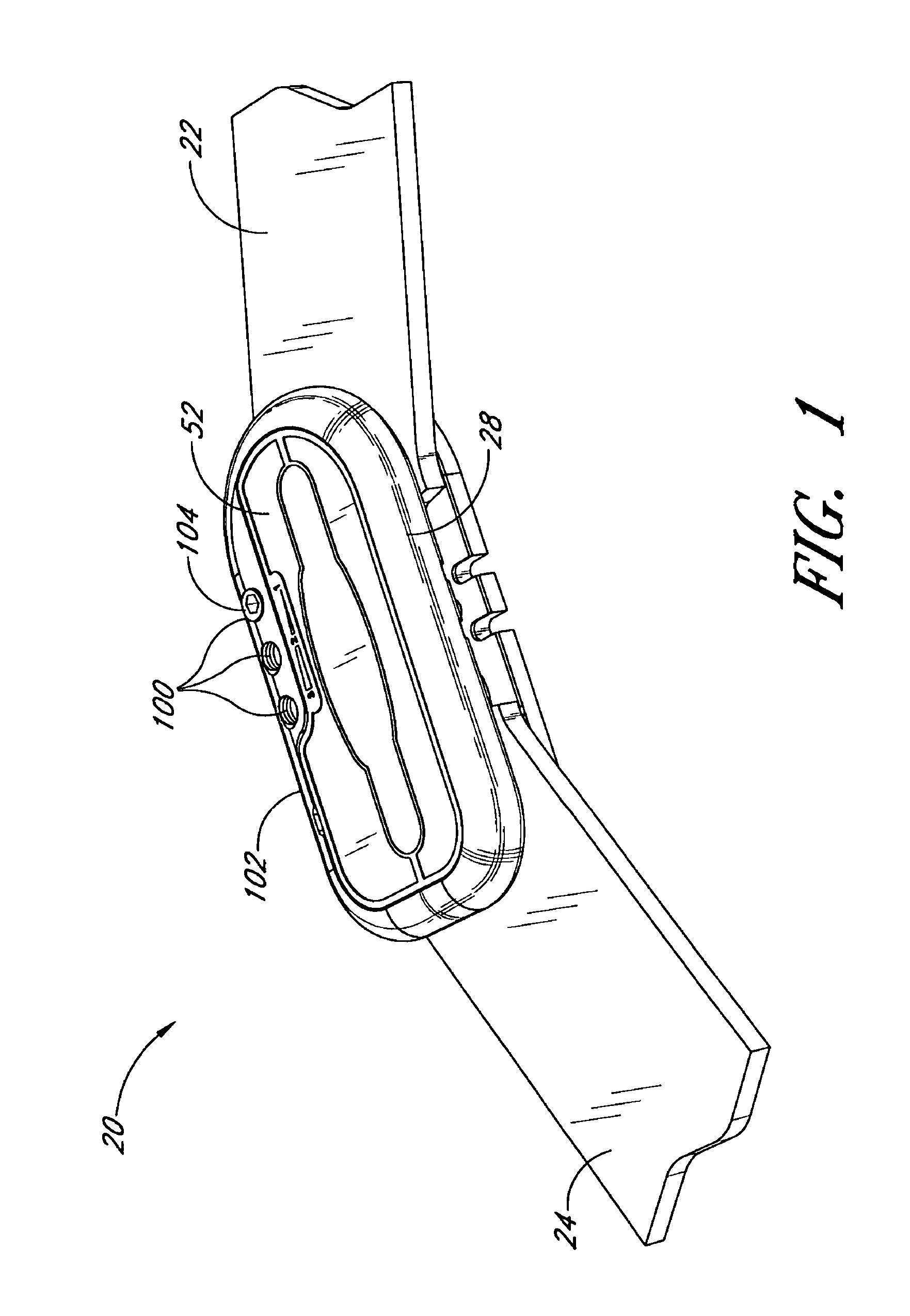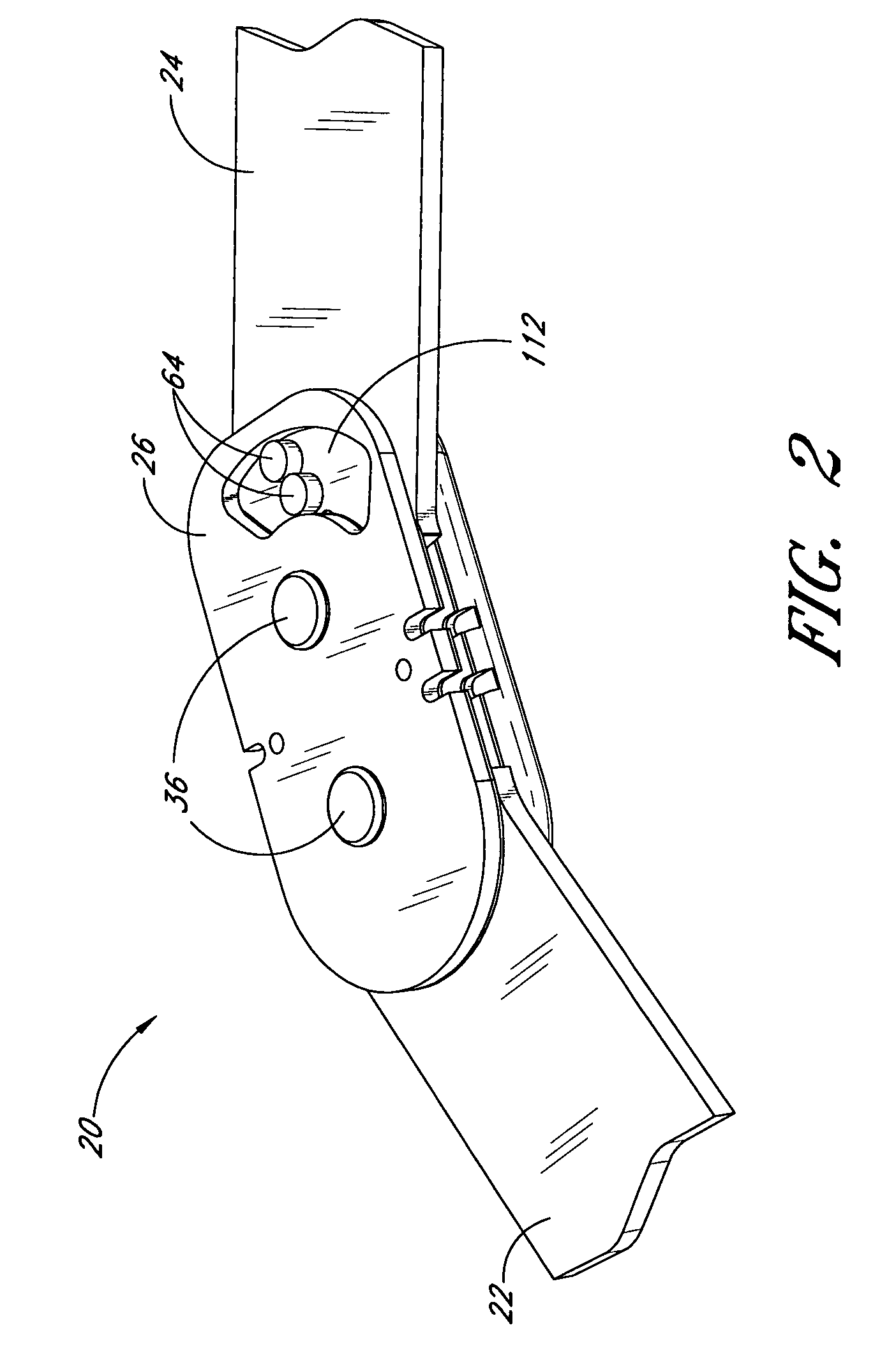Motion controlling hinge for orthopedic brace
a technology of hinges and hinges, applied in the field of orthopedic bracing, can solve the problems of degenerative changes within the joint, injury to other structures, and people often having difficulty avoiding small flexion angles during normal activities
- Summary
- Abstract
- Description
- Claims
- Application Information
AI Technical Summary
Benefits of technology
Problems solved by technology
Method used
Image
Examples
Embodiment Construction
,” one will understand how the features of the preferred embodiments provide advantages, which include easy adjustability of a magnitude of a force that restrains hinge motion, easy adjustability of an angle at which the hinge motion controlling force is applied, and the capability to turn off an extension resistance provided by the hinge.
[0015]One embodiment of the hinge for orthopedic brace comprises a hinge plate, a spring member, and first and second arms pivotably secured to the hinge plate. An actuator is secured to the second arm. As the arms pivot in a first direction such that an angle between them increases, once the arms reach a desired extension angle, the spring member exerts a force on the actuator tending to bias the second arm in a second direction opposite the first direction. This embodiment may further comprise a cam pivotably secured to the hinge. The cam is pivotable between an “ON” position and an “OFF” position. The spring member biases the second arm only whe...
PUM
 Login to View More
Login to View More Abstract
Description
Claims
Application Information
 Login to View More
Login to View More - R&D
- Intellectual Property
- Life Sciences
- Materials
- Tech Scout
- Unparalleled Data Quality
- Higher Quality Content
- 60% Fewer Hallucinations
Browse by: Latest US Patents, China's latest patents, Technical Efficacy Thesaurus, Application Domain, Technology Topic, Popular Technical Reports.
© 2025 PatSnap. All rights reserved.Legal|Privacy policy|Modern Slavery Act Transparency Statement|Sitemap|About US| Contact US: help@patsnap.com



